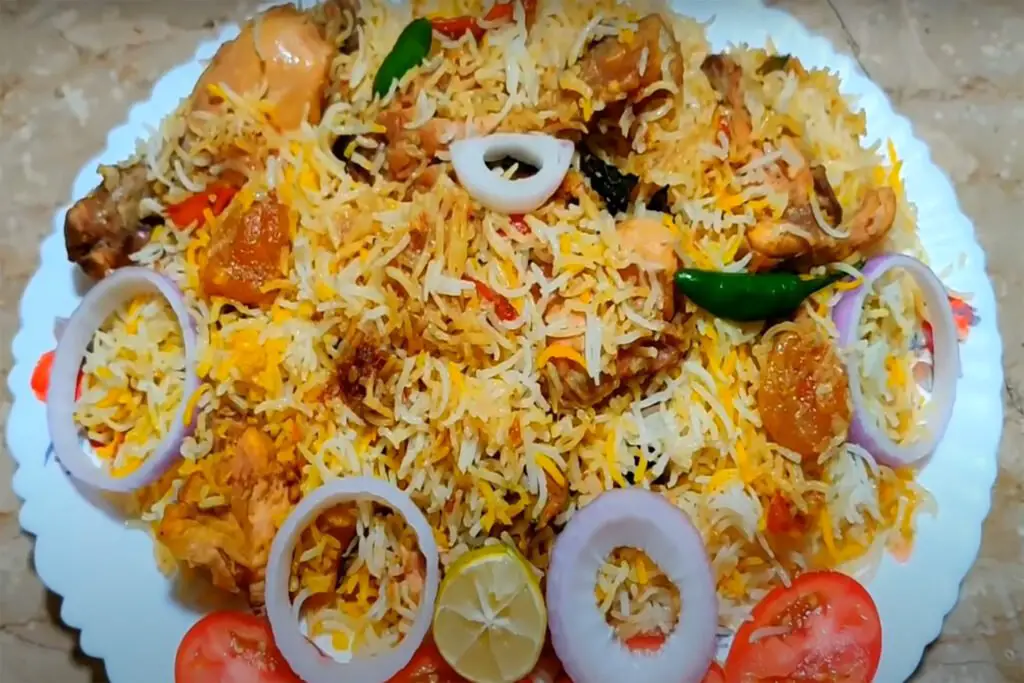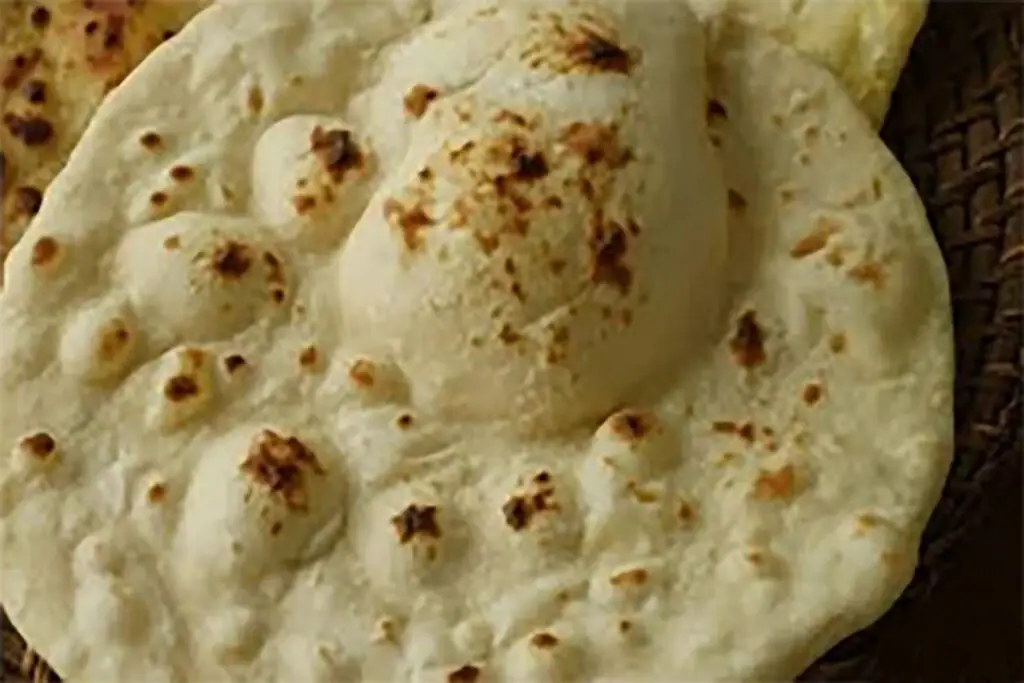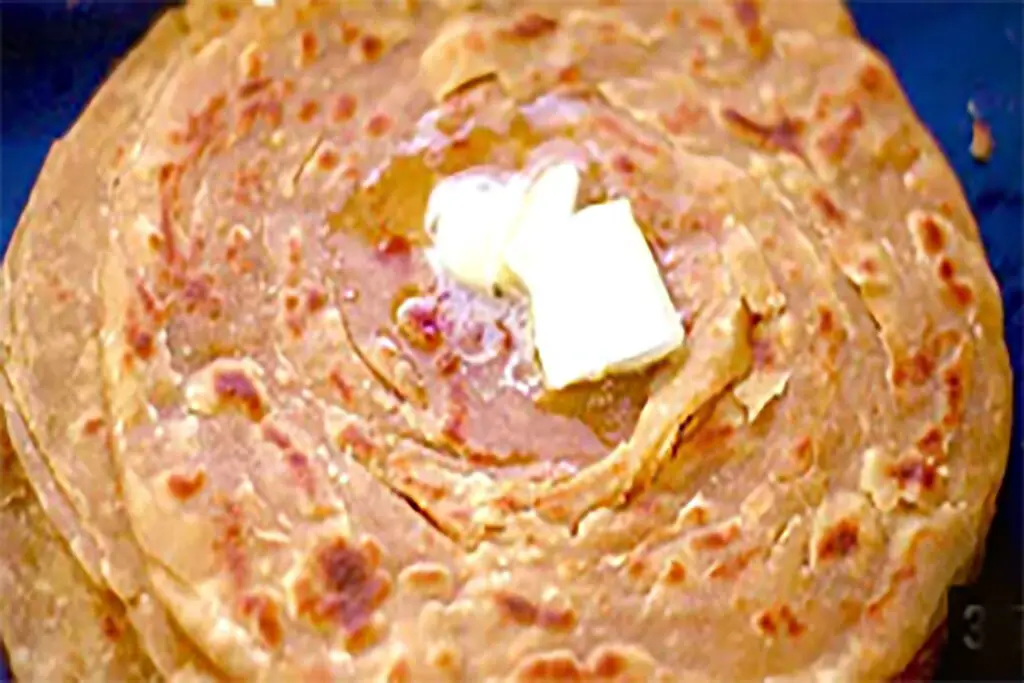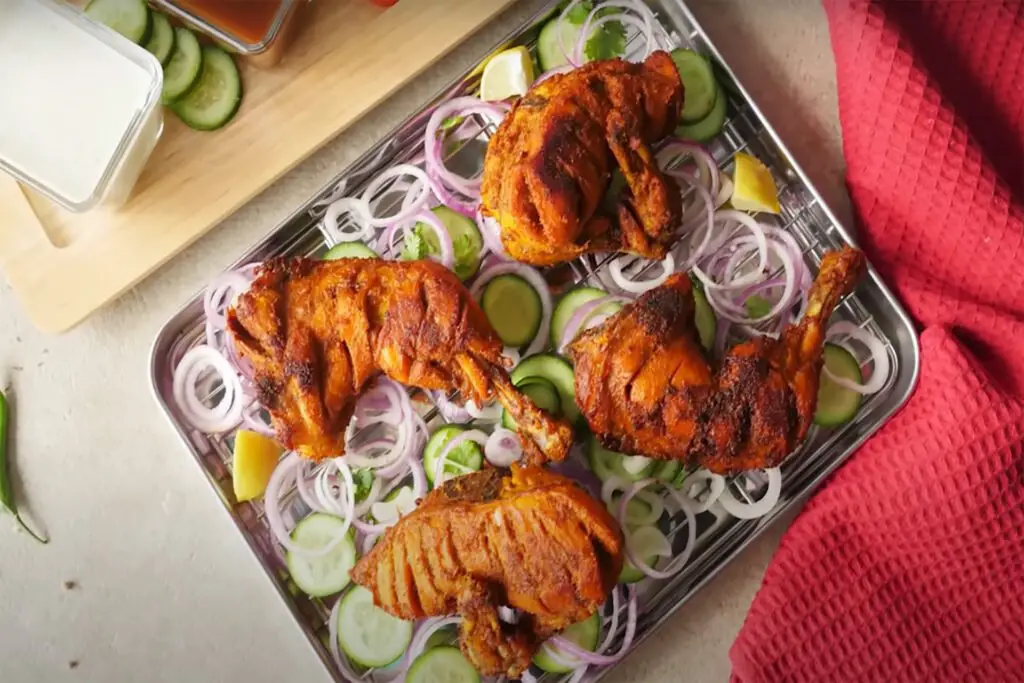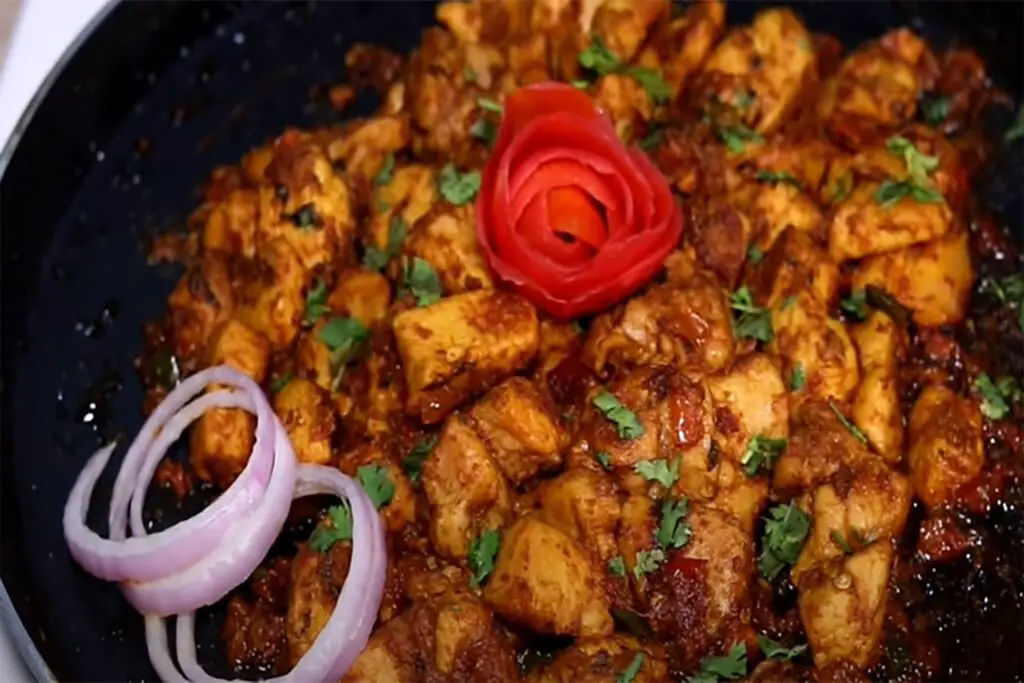Biryani, the undisputed king of South Asian cuisine, is not just a dish. It is a gastronomic journey, an aromatic odyssey that captivates the taste buds and transcends cultural boundaries. This centuries-old culinary masterpiece has woven itself into the fabric of diverse cultures, each region creating its own interpretation of this delicious symphony.
Sources and legends:
The origin of biryani is shrouded in a tapestry of legends and historical stories. Some trace its roots to Persia, where the dish evolved from the Persian pilaf, while others credit the Indian subcontinent with its creation. Regardless of its origin, the evolution of biryani is a testament to the region’s signature food fusion.
Essence of Biryani:
At its core, biryani is an aromatic rice dish with a mixture of marinated meat and aromatic spices. The rice, usually basmati, is mixed with saffron or food coloring, creating not only visual appeal but a subtle aroma that permeates the air. Meat, whether chicken, mutton, beef, or even fish, is marinated in a mixture of spices and yogurt, ensuring that every bite is flavorful.
Spice Symphony:
The allure of biryani comes from the intricate dance of spices that grace the dish. Cardamom, cloves, cinnamon, and bay leaves make up the base notes, while cumin, coriander, and turmeric add depth. The symphony of flavors is orchestrated by the triumphant trio of ginger, garlic, and green chilies, each lending its own unique chord to the recipe.
Regional Varieties:
As biryani moved across the subcontinent, it evolved into different regional varieties, each boasting its own unique personality. The Hyderabadi biryani, with its burnt red color and aromatic blend of spices, garnished with saffron and rose water, stands in stark contrast to the subtle elegance of the Lucknow biryani.
The potato-rich Kolkata biryani tells a story of adaptation, while the aromatic Bombay biryani bears the influence of the Parsi community. From the rustic flavors of Ambur Biryani to the seafood-laden Malabar Biryani, the dish has evolved into countless forms, reflecting the diversity of the subcontinent.
The Dum Cooking Technique:
At the heart of biryani’s perfection is the dum cooking technique. The layered ingredients are sealed in a pot and cooked slowly over low heat or in the oven. This method allows the meat to tenderize and the spices to blend together, resulting in a dish where every grain of rice contains the essence of the spice.
Biryani as a Celebration:
Biryani is not just sustenance. It’s a celebration on a plate. From festive occasions to family gatherings, biryani takes center stage, symbolizing warmth, hospitality and the joy of coming together over a communal meal. Its aromatic presence at weddings and special events elevates the culinary experience and leaves an indelible impression on the collective memory.
Universal Love:
In modern times, biryani has moved beyond its regional roots to capture the hearts (and stomachs) of foodies across the globe. Its global appeal has transformed it from a traditional delicacy to a beloved international dish, loved for its complexity of flavors and the comfort it brings.
In every fragrant grain of biryani, one can taste the history, cultural fusion, and passion that define South Asian cuisine. Biryani is not just a dish. It is a sensory experience that beckons those who want to embark on a culinary journey through time and tradition. Hence, whether enjoyed in a bustling Hyderabad bazaar or savored from the comfort of one’s home, biryani remains an enduring symbol of culinary excellence, enticing all to enjoy its unparalleled richness. invites to be
In Pakistan, Chicken Biryani is easily the most popular dish and often prepared on Fridays or weekends; also at formal dinners or weddings or picnics or whatever; biryani is suitable dish for all occasions.
Key Notes for Making Biryani
- A good Biryani should have separate but fully cooked grains of rice.
- Salt is most important in the taste of any food, make sure you use salt in all steps of marinating, soaking rice, cooking rice, sauce and frying potatoes. But that doesn’t mean you’re overdoing it.
- The oil I used is the least possible with authentic flavors but real biryani requires even more oil. When mutton biryani is traditionally cooked, chunks of fat (riwaj) are also added for meaty flavor and fatty moisture.
- Frying or bonofing, that is, cooking over high heat until all the water has dried and the oil separates clearly on the sides of the pot. It is the most important in all Pakistani cuisine. If Bhunofy gets it right, it will be finger-licking good. The only problem for bhonofying is that you have to add a little extra oil.
- Whole spices like pepper, bay leaf, cardamom are only for aroma, they release juice and flavor in the rice. Don’t bite them. Just set aside like you do with the bones.
- The type of rice is important, use basmati rice or sella basmati rice. Brown rice is good for pulao not Biryani.
Ingredients for Chicken Biryani
Marinate the chicken
- ▢1 (750 grams) chicken, cut into 12 pieces
- ▢1 cup yogurt
spices for marinating chicken
- ▢2 spoons of green chili paste
- ▢3 spoons of ginger-garlic paste
- ▢1 tbsp red chilli powder or 2 tbsp Biryani masala
- ▢1 tablespoon of coriander powder
- ▢1 teaspoon of cumin seeds, roasted
- ▢¾ teaspoons of turmeric powder
- ▢2 inches of cinnamon
- ▢¼ teaspoons of black pepper
- ▢1½ teaspoons of garam masala powder
- ▢5 cloves
- ▢2 black cardamom
- ▢1 bay leaf
- ▢1 teaspoon of salt or to taste
For the sauce
- ▢½ cup oil
- ▢4 (500 grams) onions, thinly sliced (or 1 cup fried onions, packed)
- ▢4-5 to (500 grams) raw pureed tomatoes
- ▢6–8 prunes*
- ▢5 (400 grams) potatoes, cut into large pieces, optional
- ▢1-2 teaspoons chat masala, (add only if you like spicy food)
For Rice
- ▢4 cups (700 grams) basmati rice, soaked in water for 10 minutes
- ▢Water for cooking rice
Spices for Rice
- ▢2 inches of cinnamon
- ▢½ teaspoon cumin seeds
- ▢1 whole bay leaf
- ▢6 black pepper
- ▢3-4 cloves
- ▢4 teaspoons of salt or as needed
Build (dum) for Biryani
- ▢4 tablespoons of oil, divided
- ▢1 handful of coriander leaves, chopped
- ▢1 handful of mint leaves, chopped
- ▢5 medium green chili peppers, optional
- ▢Pinch of soaked saffron (or essence of kewra)
- ▢Pinch of yellow or orange color
- ▢½ cup of water per um
Instructions for making Biryani
- In a bowl, marinate the chicken with chicken seasoning and yogurt and leave for 20 minutes.
For the sauce:
- Heat the oil in a saucepan and fry the chopped onion until crispy and golden. Stir in the marinated chicken.
- Cook the marinated chicken for 7 minutes until it changes color and the oil separates from the side of the pot.
- Add the tomato paste and cook for another 10-15 until all the tomato water dries up and the oil separates. Your chicken should be tender by now or cook further as needed. Fry the chicken (bhunofa) well for a rich taste. Set aside.
- Half boil the peeled potatoes with turmeric. Then fry the potatoes with a pinch of salt until golden brown, transfer the potatoes to a paper towel and set aside.
- Now potatoes and prunes in chicken sauce. The chicken gravy should have a thick and runny consistency and should not be dry.
Tip: Add a little water to the sauce if it’s too dry.
For Rice
- Follow the steps for the rice at the same time as the steps for the chicken. In a large biryani pot, take the water, rice seasoning and salt. Bring the water to a boil. Mix well to release the flavor of the spices.
- When the color of the water changes, add the soaked rice. Cook the rice until 70% cooked, then drain all the water and store the rice in a colander until needed. (Stir some oil into the rice to keep it from sticking.)
Pro tip: Stay around the pot while the rice is cooking and check periodically to see if the grain of rice is done. The rice will feel cooked when pressed between your finger and thumb, but firm and not at all mushy.
Compilation
- Brush the bottom of a rice bowl with 2 tablespoons of oil.
- Spread a little more than ½ of the rice on the bottom and then add a layer of chicken sauce. Divide the chicken pieces and potato pieces evenly in the pot.
- Now sprinkle the herbs, chat masala and chilli over the chicken layer.
- Finally add a layer of remaining rice. Drizzle 2 tablespoons of oil over the rice layer.
- Mix food coloring, saffron and water. Spread evenly over the rice. (You can also add kewra water along with saffron.)
- Cover the pot with foil to seal in the steam. Place a heavy lid as well. Heat the pot on high for 5-7 minutes. Then reduce the heat to low and cook for 15-20 minutes until the rice is fully cooked and steam comes out when the lid is removed.
- Stir the rice with a large flat spoon or small plate. (Do not overmix to break the rice grains.) And serve hot with raita and kachumber.

